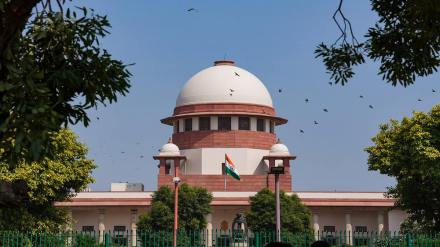The dominoes seem to have fallen as expected after the Supreme Court’s Ayodhya Ram Janmabhoomi verdict in 2019. A district court in Varanasi had ordered a survey of the Gyanvapi mosque that abuts the Kashi Vishwanath temple in the city in April this year—and the survey was allowed by the Supreme Court in May. In September, the Varanasi court allowed a suit by Hindu petitioners seeking the right to worship inside the mosque, effectively making it a ‘disputed site’ through judicial recognition. And now, a district court in Mathura has allowed a revenue department survey of the Shahi Idgah mosque in the city, while hearing a new plea challenging the ownership of the land on which the Idgah is built. The department has been ordered to complete its survey and submit its report by January 20. The direction has come in response to a plea by Hindu Sena, an outfit representing Bal Krishna (the Idgah is located next to the assumed birthplace of the Hindu god, Krishna).
These court orders post the Ayodhya verdict bring to mind the rallying cry of sundry Hindu groups since the time the Babri Masjid was destroyed: “Ayodhya to sirf jhaanki hai, Kashi, Mathura baqi hai” (Ayodhya was a mere trailer, Kashi and Mathura are still left). Both court orders have come despite the Places of Worship Act 1991 expressly mandating the preservation of religious sites as they were on August 15, 1947 and prohibiting any attempt to change their religious nature. The Varanasi court had relied on a big “if” in September to sidestep the Places of Worship Act, holding that “if this contention (that the plaintiffs were worshipping at the site even after August 15, 1947) is proved, then the suit is not barred” under the Places of Worship Act. In the Mathura matter, the district court had allowed a plea by the Shri Krishna Janmabhoomi Trust and other private parties seeking ownership of the land in which the Shahi Idgah mosque is built and had referred it to a lower court for trial.
In proceeding the way they have, the lower courts appear to have failed to heed the Supreme Court’s robust endorsement of the Places of Worship Act. The apex court had said that the Act “imposed a non-derogable obligation towards enforcing our commitment to secularism under the Indian Constitution” and that it was “designed to protect the secular features of the Indian polity, which is one of the basic features of the Constitution.” It had also underscored the fact that the Act preserved “non-retrogression” as a “foundational feature of the fundamental constitutional principles, of which secularism is a core component.” While the constitutionality of the Act itself has been challenged in the Supreme Court, the Varanasi and Mathura orders play into the demand to bury the Act even as it stands as the law of the land today.
The lower courts, as well as the political/civil society outfits who champion Hindu fringe group causes, would do well to remember two things. One, the principle of “preponderance of probabilities”, which the Supreme Court relied on for its Ayodhya verdict, demands “closer scrutiny” in matters such as disputes surrounding religious structures. That is, “the nature and gravity of an issue necessarily determines the manner of attaining reasonable satisfaction of the truth of the issue”. And two, as then Lok Sabha member Malini Bhattacharya observed during the enactment of the 1991 law, “whatever may have happened before that (August 15, 1947), we all expected that from that date, there should be no such retrogression into the past.”
